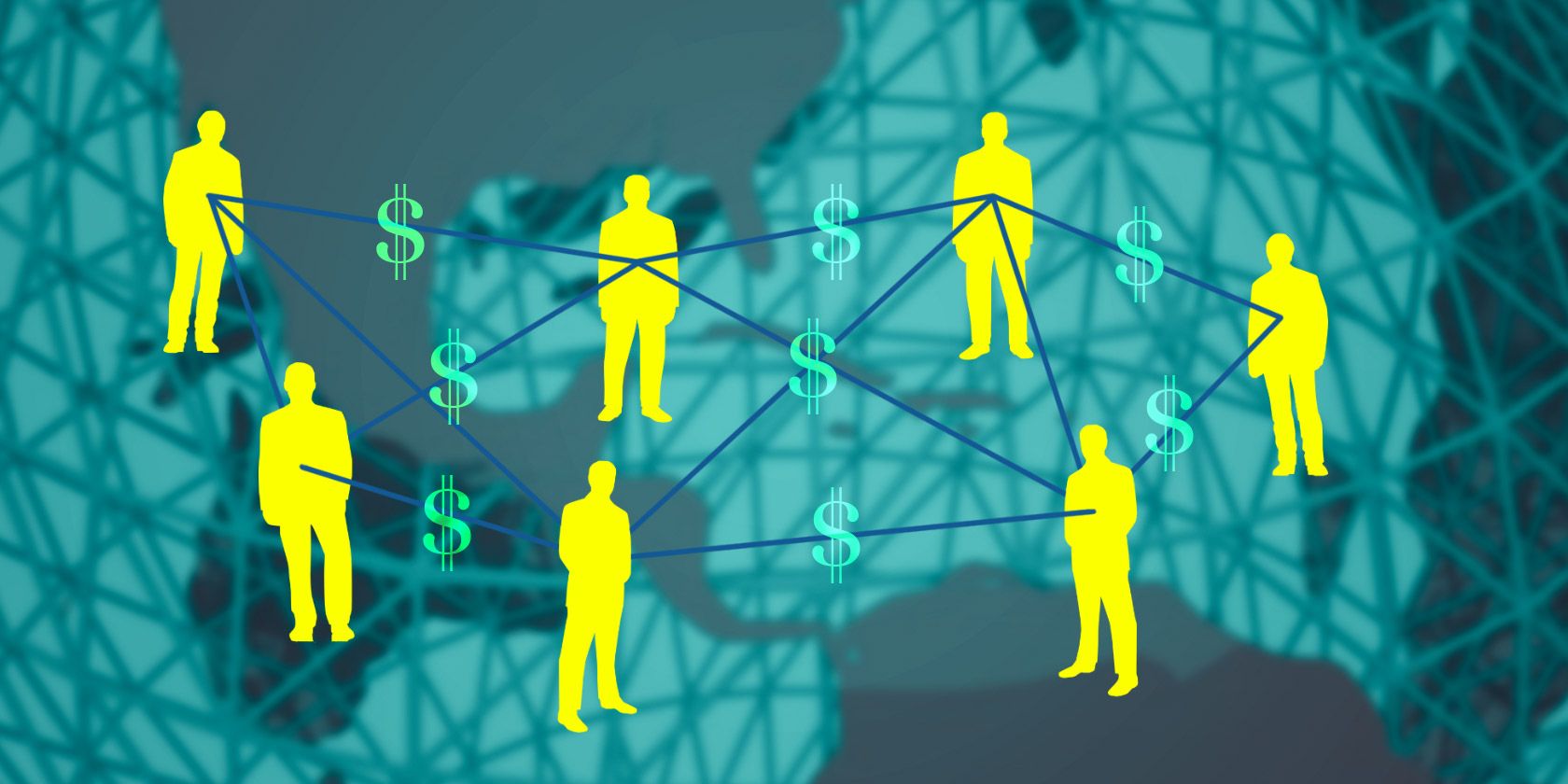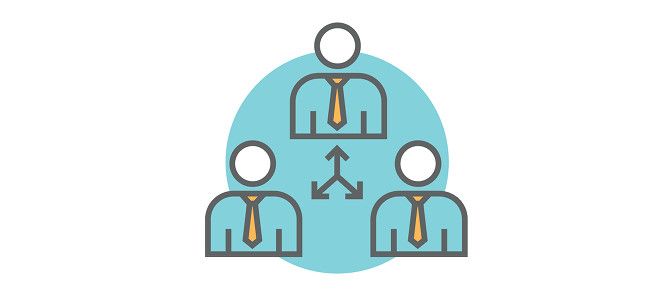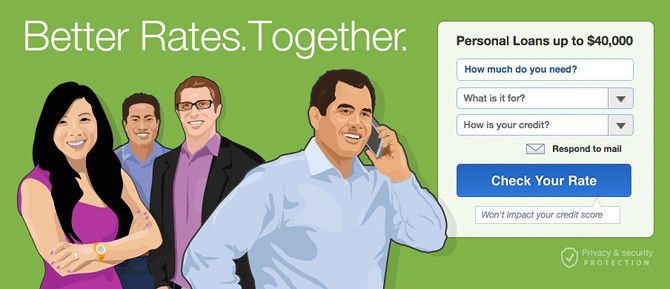There are two ways to approach peer-to-peer (P2P) lending: as a borrower or as a lender. But regardless of which one you are, there are a number of distinct benefits that you can take advantage of to strengthen your current and future financial situation.
Of course, there are also a few pitfalls that may consume you, so you need to be careful. P2P lending can lead to prosperity or it can lead to ruin. It's a double-edged sword that you can't be reckless with.
But as long as you know what you're getting into, are aware of the risks, and avoid some common mistakes, you'll be fine. Here's everything you need to know.
What Is Peer-to-Peer Lending?
P2P lending is like an eBay for loans. That is a very rough analogy, so let's elaborate a bit on that.
eBay is an open marketplace that lets buyers and sellers congregate in one location and trade goods, all while bypassing the need for a retailer. In other words, eBay is the online platform that facilitates the direct buying and selling of goods between people.
P2P lending is very similar, which is why it's sometimes called "marketplace lending." Instead of requesting a loan from a financial institution like a bank, credit union, or government, you can request a loan that gets backed by regular people like you and me -- hence "peer-to-peer."
The actual logistics are a bit more complicated than that, but still simple enough that anyone can hop online and apply for a loan within minutes.
As a borrower, all you have to do is fill out a quick online application, which involves a credit history check (a "soft" inquiry) and an explanation of why you want the loan. Depending on these and a few other factors, you'll be assigned an interest rate, and your loan request will be posted to the marketplace.
As a lender, you'll be able to browse the marketplace for loan requests. Each loan request will provide you with relevant information about the borrower (e.g. income, credit history, reason for the loan) and if you like it, you'll be able to fund a portion of the loan request -- or all of it, if you wish. As the loan is paid back, you'll receive payments proportional to how much you invested.
Is Peer-to-Peer Lending Right for You?
P2P lending isn't right for everyone. Is it a viable option when you need a quick personal loan? Yes. Is it a feasible way to invest your extra money and potentially make great returns? Yes. But are the risks worth it? Well, let's explore the pros and cons of both sides.
The Pros and Cons of Borrowing
One of the main benefits of going the P2P loan route is that interest rates tend to be lower than what you can get at, say, a bank. Whereas a personal loan might have an interest rate between 12–20% from a financial institution (which is still much lower than a credit card), a P2P loan can had for as little as 5% with good credit.
Another huge benefit is that the application process is far less formal than a traditional loan. You don't need as much documentation, the credit checks are "soft" rather than "hard," and even if you have bad credit, you can explain why. Also, you can get a loan for any reason as long as there are lenders who will invest.
Lastly, P2P loans are unsecured, which means there's absolutely no collateral required. This makes it a safer option than taking out, a second mortgage, home equity line of credit, or secured credit card. Loans are doled out based solely on your creditworthiness.
One of the best ways to use this as a borrower is to consolidate a bunch of higher-interest loans under a single P2P loan, which can save you hundreds, or even thousands, in interest over many years.
But all's not sunshine and rainbows.
Interest rates for P2P loans skyrocket as your creditworthiness falls, to the point where you might have to pay more in interest than a credit card (then again, if you're at this stage, you probably don't qualify for any credit cards). The highest interest rate at Lending Club, for example, is a whopping 31%.
If you're late on payments, fees can be significant -- and if you default on your loan, the collection fees are out of this world. P2P loans also tend to favor shorter term lengths, as interest rates tend to increase with longer requests. Terms over five years are rare.
And don't expect guaranteed funding. In 2014, both Lending Club and Prosper claimed that fewer than 10% of their loan requests were actually funded.
Privacy is another concern. While reputable marketplaces won't expose your most sensitive details, you still have to be wary of the details that do get shown to the public, particularly to lenders that browse through loan requests.
Now here's the thing: if you have a habit of getting into debt, you really should avoid P2P lending altogether. Debt is debt, and if you aren't in control of your finances right now, P2P lending will most likely result in falling deeper in the hole.
The Pros and Cons of Lending
The real question that a lot of people have when they first hear about P2P lending is why would anyone give money to strangers for pennies on the dollar? It all comes down to return on investment.
Over the past few years, smart P2P lenders have seen average returns in the ballpark of 6–12%. In the grand scheme of things, that's pretty darn good. If you diversify and lend out $10,000 to P2P borrowers, that's $600 to $1,200 per year in passive income -- and not only do most lenders invest more than that, but some have experienced even better returns, up to 15% and beyond.
By contrast, you could stick your money in an online savings account and earn up to 1% (you'll be hard pressed to find a better rate than that) or you can park it in long-term investments like an index fund and get an average return of 6–8%, but with bigger year-to-year swings than P2P lending.
You'll need a lot of money to make it worth it, but P2P lending can be a great way to diversify. Spread your resources across the gamut from high-risk-high-reward to low-risk-low-reward borrowers and you'll do fine.
But of course, there are some downsides to consider.
First of all, P2P lending is illiquid. The beauty of a savings account is that you can pull your money out at any time -- but once you've invested in a P2P loan, it's difficult to pull your money out on a whim. (Then again, this is true of most kinds of lending and long-term investments.)
The other main risk is that borrowers will default. The good news is that services like Lending Club and Prosper survived the 2008 recession, and if there was ever a time when widespread defaults would've killed the P2P movement, it was then.
However, when loans do go into default, it's usually your responsibility to collect on late payments, and that can be a time-consuming process. Also, if borrowers ever go bankrupt, you'll have to eat the loss. (The more reputable sites may offer protections against this, but only up to a specified limit.)
And don't forget about taxes! Dividends are counted as regular income, so even though your nominal returns may look good, the numbers won't be as pretty once you take taxes into account. And while it is possible to write off defaulted loans, you'll have to write them off individually -- a potential pain in the neck when you've diversified across hundreds of borrowers.
Getting Started With Peer-to-Peer Lending
Still interested? Great! The truth is that despite all of the risks involved, a lot of people walk away happy from the P2P lending experience -- not everyone, of course, but a decent percentage. How else could the P2P lending industry be 10 years old and stronger than ever before?
If you want to dive in, whether as borrower or lender, here are the top three U.S. sites that we recommend.
1. Lending Club
Lending Club is the best-known platform for P2P loans, going so far as to proclaim itself as America's #1 credit marketplace. It wasn't the first one on the scene, but it played a critical role in bringing P2P lending to the masses. One could argue that P2P lending might not even be around today if it weren't for Lending Club.
Both personal and business loans are available, each starting at minimums of $1,000 and $15,000 and going up to maximums of $40,000 and $300,000, respectively.
Consider that it has lent out over $11 billion since its inception, and add to that the fact that it went public in 2014. If that doesn't instill some faith in you that Lending Club is a robust platform with a bright future ahead of it, I'm not sure what will.
2. Prosper
Prosper was the first real P2P lending service in the U.S. and continues to be one of the top platforms in the industry. Having lent out over $6 billion since its inception, Prosper has a strong history and a promising future ahead of it.
Both personal and business loans are available, starting at a minimum of $2,000 up to a maximum of $35,000. Loan terms must be three or five years long. There aren't any other options as of this writing.
3. Upstart
Launched in 2012, Upstart is one of the youngest players on the field -- but it was co-founded by two ex-employees of Google, so that lends a lot of credibility. The unique thing about Upstart is that your creditworthiness is actually determined by your education and experience, not your credit score.
Both personal and business loans are available, starting at a minimum of $1,000 up to a maximum of $50,000. Loan terms must be three or five years long. There aren't any other options as of this writing.
Because of the non-focus on credit scores, Upstart is enormously popular among those in their 20s and 30s. Many of these younger folks haven't been able to build a strong credit history, yet have the means and willingness to pay back loaned money.
So Is Peer-to-Peer Lending Worth It?
It can be, under the right circumstances.
If you're drowning in high-interest debt and want some breathing room, you can take out a P2P loan with lower interest and save money in the long run. If you need money and can't get a traditional personal loan, a P2P loan can be a great option. If you want to go to school but can't get financial aid, a P2P loan might be your only option.
But if you're thinking of getting a P2P loan for wants and not needs, then we advise against. If you're prone to debt accumulation and wild spending, do not get a P2P loan.
If you're an investor, P2P loans can be an effective way to diversify yourself beyond stocks, bonds, and real estate. It doesn't require much effort, the risk is what you make of it, and the returns are moderate to good. Just remember to treat it as an illiquid, long-term investment.
Have you considered P2P lending before, either as a borrower or lender? If you've ever participated, we'd love to know how well it went. Would you recommend it or not? Share your thoughts and experiences with us below!








